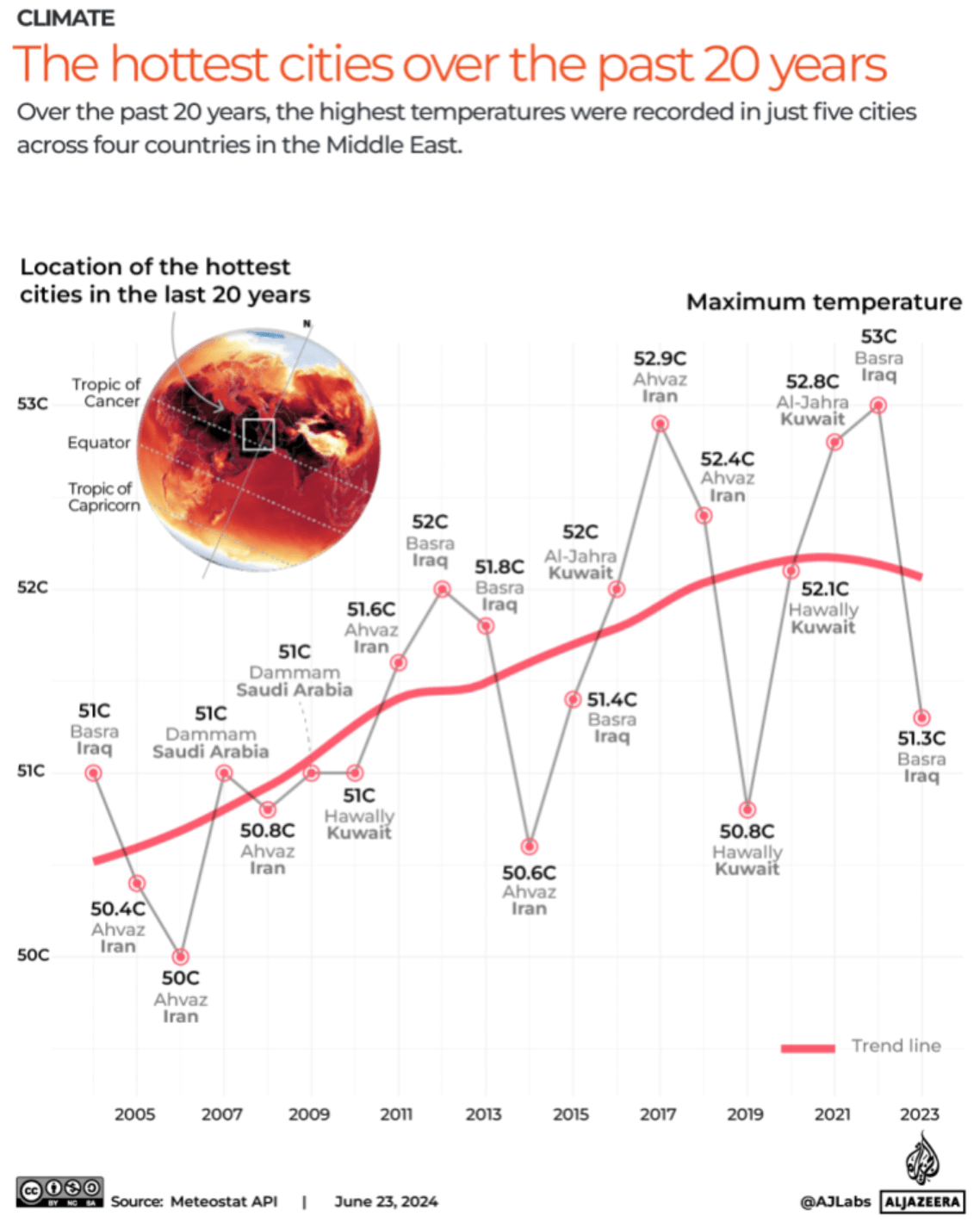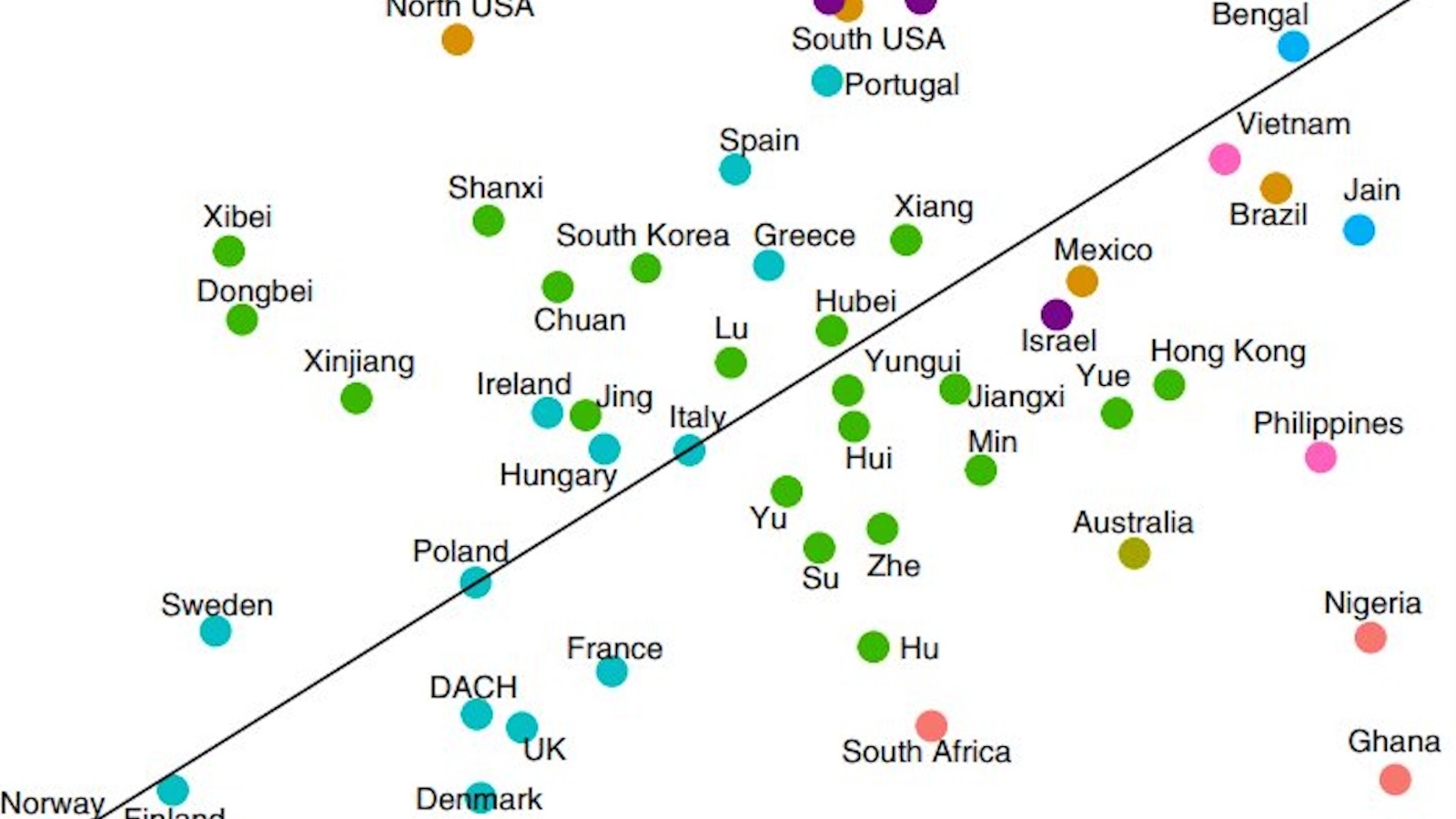Earth’s hottest cities are all in this little corner of the planet

- Where’s the world’s hottest city? If you just point to this part of the globe, you’ll always be close.
- Just five cities spread over four neighboring countries have passed that title between them over the past two decades.
- Which one will it be this year? It’s perhaps a bit too early to tell. But even without breaking records, the region is insanely hot.
What is the world’s hottest city? I don’t mean “hot” in the figurative sense — symbolically synonymous with its actual opposite: “cool.” (That would have to be a top tourist draw like London, Dubai, or New York City.) No, I mean literally, oppressively hot. Positively broiling. Life-threateningly scorching. The kind of open-air oven that you would run away from, if only it wasn’t so hot outside.

The planet has been smashing global heat records of late. We’ve just had the 13 hottest months on record, and the three hottest days. The year has only just passed the halfway mark, so it’s perhaps a bit early to predict which city will have the year’s highest day temperature.
Winners of a dubious accolade
It is, however, a pretty good guess that the world’s hottest city will be located inside the small square on the globe in the upper left-hand corner of this graph. In the past two decades, that’s where the winners of this dubious accolade have all come from.
If those past statistics are anything to go by, we can narrow down the selection to just five cities within that square, a sizzling quintet who have passed around that title between them like a proverbial hot potato.
- Dammam, the capital of Saudi Arabia’s Eastern Province and a city of 1.5 million, won the title twice: in 2007 and 2009 (both times 51 °C, or 123.8 °F). This is where the country’s oil industry kicked off. When Saudi Aramco’s now-famous Dammam Well No. 7 started spouting back in 1938, it was clear that Saudi Arabia had hit the hydrocarbon jackpot. Known as “Lucky Seven” and “Prosperity Well”, that rig still stands. Today, Dammam, located on the Gulf coast not far from Bahrain, is Saudi Arabia’s third-largest port and one of the main exit points for its oil.
- Al-Jahra is a Kuwaiti city of 400,000 about 20 miles (32 km) west of that small Gulf state’s capital. It was the hottest city in the world in 2016 (52 °C, or 125.6 °F) and 2021 (52.8 °C, or 127 °F). The city is centered on an ancient oasis and was once renowned for its agricultural production. During the 1991 Gulf War, Al-Jahra was the site of the infamous “Highway of Death,” where Allied forces destroyed a retreating Iraqi convoy.
- Also in Kuwait, Hawally (population: about 200,000) was the world’s hottest city in 2010 (51 °C; 123.8 °F), 2019 (50.8 °C; 123.4 °F), and 2020 (52.1 °C; 125.8 °F). The settlement dates back to the 7th century, when the freshwater wells were dug that give the city its name. Hawally houses a smorgasbord of guest worker nationalities, both from the Arab world and Asia. It’s home to a museum and a soccer stadium, a theme park, restaurants and malls, and many of Kuwait’s international schools, serving British, American, Pakistani, and other communities.

For the past 20 years, the world’s hottest cities were all located in the “oven window”, a small-ish rectangle covering parts of Iran, Iraq, and the Arabian Peninsula. (Credit: Meteostat API/@AJLabs/Al Jazeera – CC BY NC SA)
- The southern Iraqi city of Basra was the world’s hottest city in 2004, 2012, 2013, 2015, and for the two previous years, with top temperatures ranging from Oof! (51 °C; 123.8 °F) to Ouch! (53 °C; 127.4 °F). Sitting at Iraq’s southern tip, near the northern edge of the Gulf, Basra (pop. 2.5 million) is the country’s third-largest city (after Baghdad and Mosul), and its economic capital. In fairytale, it is one of the cities from which Sinbad sails. Apart from registering some of the world’s hottest daytime temperatures, Basra one night in 2016 also measured a low of 38.8 °C (101.8 °F), a temperature only bested by measurements in Khasab, Oman, and Death Valley, California.
- The southern Iranian city of Ahvaz (pop. 1.2 million) was the world’s hottest city for seven of the past 20 years (2005-06, 2008, 2011, 2014, 2017-18). Because of its oil industry, it’s also one of the most air-polluted cities in the world.
Over the past two decades, Basra recorded at least 129 days over 50 °C (122 °F), Ahvaz 84 days and Al-Jahra 83 days. All temperatures are measured in the shade, mind you.
The trend line goes up
Ahvaz is just 75 miles (120 km) from Basra, which is no more than 60 miles (100 km) north of the two Kuwaiti cities on the list. Go down 235 more miles (380 km), and you’re in Dammam. It’s no coincidence the world’s hottest cities are bunched so close together.
They’re all located along the Tropic of Cancer, the northernmost circle of latitude (23°26′10” N) where the Sun can be seen directly overhead (at the summer solstice, to be precise). As a result, this latitude gets a lot of direct sunlight throughout the year. Furthermore, all five cities are in a desert, and close to sea level, where heat radiates.
As the graph shows, the trend line has steadily gone up over the past two decades, though it flattens out toward the end, thanks to last year’s relatively “low high” in Basra.
Which way will the pendulum swing this year? And which city will be this year’s hottest? We’ll have to wait and see. But even without breaking records, life in the “oven window” is tough. A cursory glance at today’s temperatures tells us it’s a sweltering 118 °F (47.8 °C) in Ahvaz at 5 pm local time. Insanely hot, but hardly news.
Strange Maps #1252
Got a strange map? Let me know at strangemaps@gmail.com
Follow Strange Maps on X and Facebook.





